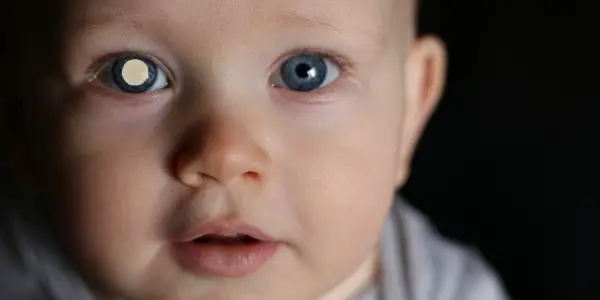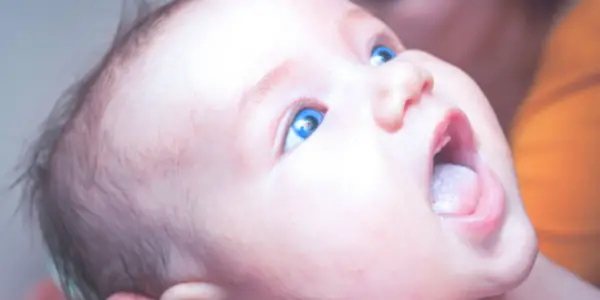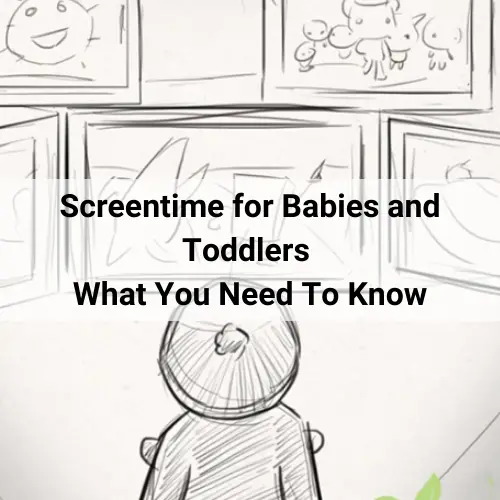Do you remember when you first saw your baby opening their eyes and you were just so mesmerized by it that you couldn’t look away? Everything seemed so interesting for them that their eyes just wander around,taking in their new environment. Let’s protect their eyes as early as we can.
Table of Contents
What can my baby see in the 1st year of life?
Newborns. In the 1st 3 months of your baby life, they can already see big shapes and faces, and bright colors often attract their attention. They focus on objects that are within 8 to 10 inches from their face. During this time their eyes and hands are not yet well coordinated and may appear to be crossed or wandering. This is normal and will eventually resolve in the next few months.
3 to 4 months. At this time, your baby focuses on smaller objects and they can already tell the difference between colors, especially green and red. Eye and hand coordination also begins to develop as they start to watch moving objects and often reach out for them.
At 4 months. At this time, your baby’s eyes are beginning to develop the depth perception or binocular vision that allows their eyes to combine 2 different images from both eyes into one. It also allows them to judge whether objects are nearer or farther away from them or to another object.
At 9 months. This is the time where your baby is trying to pull themselves up in order to walk. They are also capable of the pincer grasp where they use their thumb and forefinger when picking up an object. Babies at this age have a good estimation of distances and love to throw things.
At 12 months. Your baby’s eyes continue to develop and will continue to reach normal levels where they will continue to learn and understand using their eyes. They are also able to use a crayon or pencil to scribble and recognize pictures in books.

Warning signs of vision problems
Not all symptoms of eye problems develop suddenly, your baby might have already shown you the signs and you just didn’t know. We have listed some things you should take note of for early prevention of any eye problems for your child:
• Your baby’s eyes are not moving properly or normally. One eye moves, while the other eye doesn’t. Sometimes, your baby’s eye may look the other way when looking at a toy or something interesting. • At 1 month, you notice that your baby is not attentive to light, mobiles or bright toys. • Whenever your baby opens their eyes, one eye does not open at all. • During a photo session with flash, you notice a white spot on their eye instead of the usual red reflection. A persistent unusual spot may also be present. • There is a white, grayish-white, or yellow material in the pupil of your baby’s eye. • When there is bulging of 1 or both eyes. • When your baby has drooping eyes. • When your baby squints more often than usual. • When they rub their eyes, but they are not sleepy. • Suffer with sensitivity to light. • The pupil size of one eye is unusually bigger/smaller than the other pupil. • Sudden change of your baby’s eye that was not present before. • When their eyes show sudden signs of infection like redness, discharge, pain or too much irritation, and crusting.In addition to this, note these changes at 3 months of age and if they are present, have an immediate talk with your pediatrician:
• When your baby’s eyes do not follow a toy that moves from side to side. • When your baby’s eyes seem to wiggle side to side or jump up and down. • When you baby always tilts their head whenever they look at things. • Your baby’s eye turns in or out and stays that way.
Eye problems in children
Strabismus or Squinting of the eyes – Also known as crossed eyes or lazy eyes. You may see your baby’s one eye looking forward while the other eye cruises and looks everywhere else. It is easily treated when assessed at a young age. Amblyopia – Amblyopia can be seen when one eye cannot process the same vision the other eye has. This is usually caused by strabismus and a refractive error in the lens of your baby. If not noticed early, it may cause your baby to have poor vision.
How to improve your baby’s development
There are many ways to improve your baby’s vision development. We listed down activities that you may do in order for your baby to have better vision. Make sure that you are always there to supervise them as some toys may pose a strangulation or choking hazard to your baby. Birth to 4 months• Light up your baby’s room using a dim light or nightlight. Click here to view this nightlight projector online. • Change the location of the crib frequently and their position while sleeping. • Talk to your baby as much as you can and walk around the house with them. • Keep toys that produce white noise within your baby’s focus, within 8-12 inches, but make sure that you supervise them when playing.5 to 8 months
• Use a mobile, crib gym or any toy that your baby can kick, pull or grab. • Let your baby play on a flat mat on the floor and allow them to explore their surroundings. • Plastic or wooden blocks are preferred as these are easy to handle and play with. Check out this sensory toy online by clicking this link. • Play games that require focus and attention like patty cake.9 to 12 months
• Play hide and seek using toys or your face as this helps in improving your baby’s visual memory. • When playing with your baby, always say the name of the toys to enhance their word association and vocabulary development skills. • Let them crawl and creep all they want.
Related Articles:

Astley Golosinda
My background is in the field of medicine and I have a Bachelors Degree in Nursing. My thesis in Nursing was also published on Journal of Gerontology
For the past 4 years, I continued my studies and dedicated my time to acquiring a Doctorate of Medicine. I was a working student all throughout my post-doctorate degree. I have clinical experience in the hospital both as a nurse and now as a medical student.





